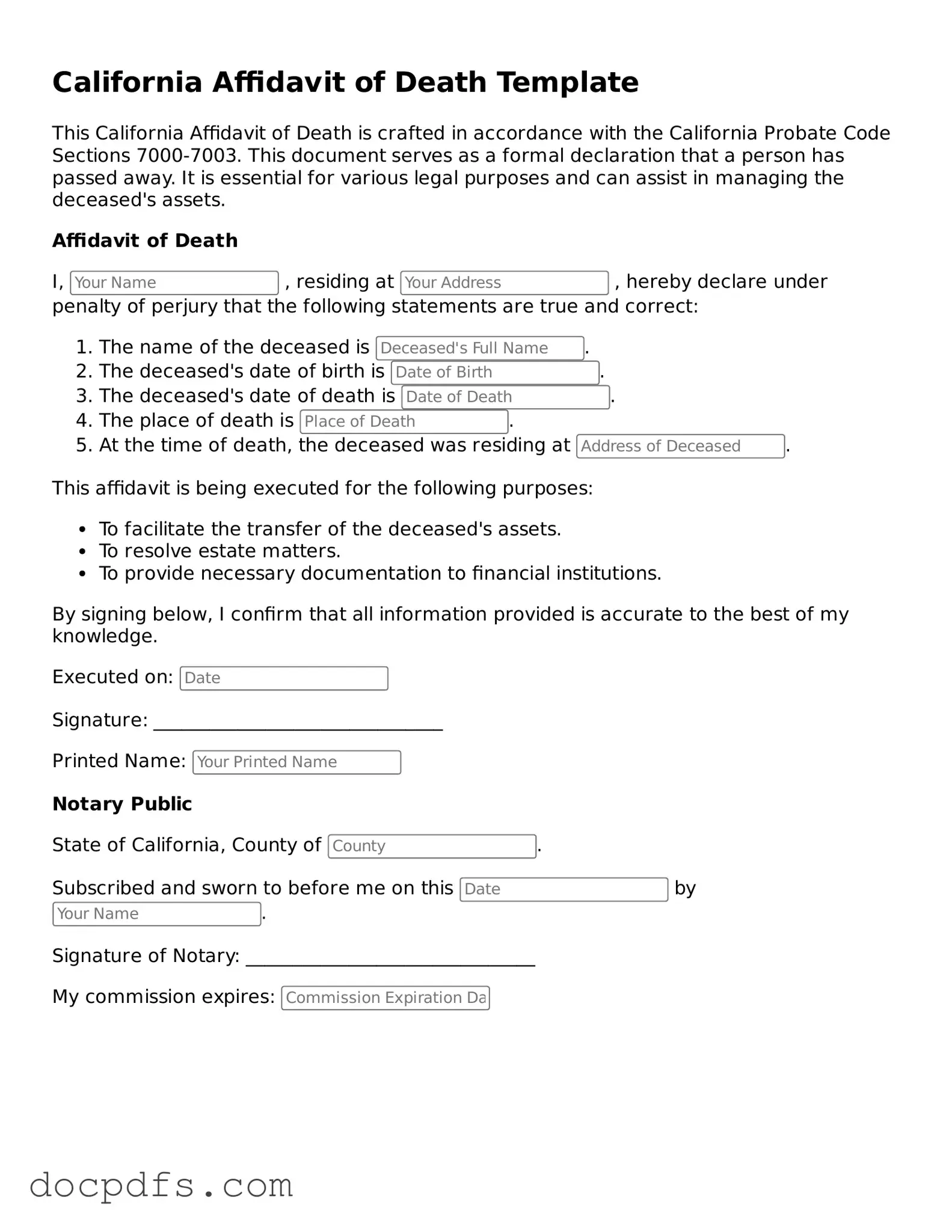The California Affidavit of Death form is a legal document used to officially declare the death of an individual. This form is often necessary when transferring property or assets after someone has passed away. It serves as proof of death and can be used in various legal and financial contexts.
Who needs to file an Affidavit of Death?
Typically, the Affidavit of Death is filed by a person who is responsible for handling the deceased’s estate. This could be a family member, a personal representative, or an executor of the will. Anyone who needs to manage the deceased’s assets or settle their affairs may find this form necessary.
The form can usually be obtained from several sources:
-
County clerk’s office
-
Online legal resource websites
-
Local probate court
Make sure to use the most current version of the form to ensure compliance with California laws.
To fill out the Affidavit of Death, you will typically need to provide:
-
The full name of the deceased
-
The date of death
-
The place of death
-
Your relationship to the deceased
-
Any relevant details about the estate or property involved
Accurate information is crucial, as any discrepancies can lead to complications in the probate process.
Is the Affidavit of Death a public document?
Yes, the Affidavit of Death is generally considered a public document. This means that anyone can request to see it. However, certain sensitive information might be restricted, depending on local laws and regulations.
Do I need a notary public to sign the Affidavit of Death?
Yes, in California, the Affidavit of Death must be signed in the presence of a notary public. This step adds an additional layer of authenticity and helps ensure that the document is legally binding.
What happens after I file the Affidavit of Death?
Once the Affidavit of Death is filed, it can be used to facilitate the transfer of the deceased's assets. This may involve updating property titles, accessing bank accounts, or initiating probate proceedings. It’s important to keep copies of the filed affidavit for your records.
Are there any fees associated with filing the Affidavit of Death?
Yes, there may be fees involved when filing the Affidavit of Death, which can vary by county. Additionally, there may be costs for notarization and obtaining copies of the document. It's wise to check with your local county clerk’s office for specific fee schedules.
Can I file the Affidavit of Death online?
Some counties in California may offer the option to file the Affidavit of Death online. However, this varies by location. It is advisable to check the website of your local county clerk or probate court for details on online filing procedures.
